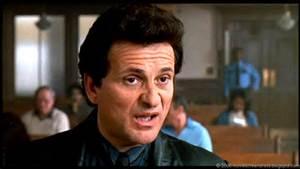In Hollywood’s stereotypical depiction of litigation, such a threat is common and is supposed to strike fear in the heart of an opposing attorney. In my last blog, I discussed the fact that much of what see from Hollywood about litigation is far from reality. So what does a lawsuit really look like? Without overwhelming you with details, I am going to break it down simply.
1. The Complaint: A lawsuit begins with a written “Complaint” filed with the court. The person who is sued typically must file a written “Answer” within 20 days or else they will “lose” by default. Someone who is served with a Complaint needs to contact an attorney immediately.
2. Discovery: In Hollywood, there are “surprise witnesses” at trial, and lawyers employ lots of “gotcha” tactics. In reality, there are rules in place to ensure that both sides can be fully informed and prepared at trial. “Discovery” simply refers to the process in which both sides are required to answer written questions from the other side, and identify all witnesses and anticipated evidence well before trial. Both sides are given the opportunity to take recorded and under-oath statements called “depositions” of all witnesses well before trial.
3. Expert Witnesses: In many cases, both sides will hire expert witnesses. Certain issues involved may be complex or highly technical, and cannot be understood by a jury without the explanation of someone trained in a particular field. For example, expert witnesses are almost always required in cases involving medical malpractice or a defective product. Both sides have opportunity to take the depositions of expert witnesses before trial.
4. Preparing For Trial: Jury trials are often scheduled many months or even more than a year in advance. A good attorney will spend countless hours in preparation for a trial, including spending plenty of time preparing the client and witnesses for trial.
5. The Trial: There are several phases of a jury trial. A jury trial can last anywhere from one day to several weeks
First, a jury is selected. A large group is called in for jury duty. Some jurors are granted an excuse to leave for various reasons. Other jurors are eliminated at the request of one or both attorneys. The attorneys get an opportunity to “strike” some potential jurors. Ultimately, a jury of 12 individuals, possibly with one or two alternates is selected. Ideally, a jury will be completely impartial.
Second, both sides present an “opening statement” to the jury. The plaintiff goes first, then the defendant.
Third, both sides present their “case-in-chief”. The plaintiff presents his/her witnesses. Each witness will be cross-examined by the defendant’s attorney. Then the defendant presents his/her witnesses, which will also be cross-examined by the plaintiff’s attorney. The plaintiff then has the opportunity to present a brief rebuttal.
Fourth, both sides present their “closing arguments”. This is the last chance both sides have to persuade the jury.
The jury is then instructed by the judge, and deliberates. Once the jury has finished deliberating, the verdict is read.
There are many details that I have left out in order to keep this brief. But I hope this is helpful to some in understanding how litigation works. If you have follow-up questions, feel free to leave a comment, or contact me.


